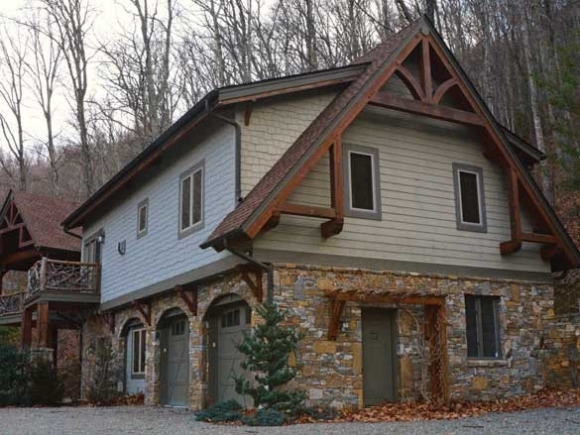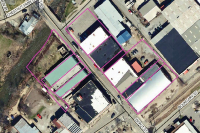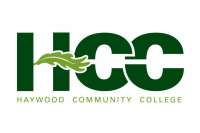Selling a mountain lifestyle: Haywood housing demand is high but inventory is low

Brian Cagle is vice president and managing broker at Beverly-Hanks in Waynesville. Beverly Hanks doesn’t sell real estate, however; Beverly-Hanks sells a lifestyle.
“That’s one of the cool things about being here in the mountains is that either you are here, or you’d like to be here. So we get to help a lot of people who’d like to be here,” Cagle said. “Some of the funnest times we have are when somebody comes in and they’ve been coming here for summers on vacation since they were kids — maybe with their parents or even grandparents — and they’ve dreamed of buying a house in the mountains. They’ve saved their whole life, and finally it’s time. That’s pretty special to be able to help people in that moment.”
Cagle alluded to the amount of work involved in making that moment a happy one — builders must build just as sellers must sell and for that to work in concert, demand must be sufficient enough to justify the orchestrations.
Haywood County has seen a pitched increase in demand, especially since 2011. In 2007, the sales volume of all real estate in the county — residential and commercial, homes and land — was $266.4 million. That volume declined to just $166 million during the depths of the Great Recession in 2011, but has since recovered to the tune of $236.6 million for 2016.
Other data from the Haywood County Board of Realtors also shows encouraging growth. In 2012, sellers could expect their homes to sit on the market for more than 32 weeks; today, that figure is closer to 22 weeks. Price per square foot is up 17.7 percent since 2012, and the amount of units sold in the county is up 41 percent over that same span.
“It’s just supply and demand, simple as that,” said Cagle.
Related Items
Driving that demand is not only the national recovery from the Great Recession, but also Haywood’s better-known neighbor to the east.
As Asheville became a nationally known cultural destination over the past decade or so, it’s seen population growth fuel a bustling real estate market that has led more and more buyers to find better values in Haywood’s nearby municipalities — especially Canton, a scant 15 miles west on Interstate 40.
While local demand appears strong as of late, the single biggest problem in the Haywood County real estate market continues to be supply.
According to Beverly-Hanks Agent Broker and HCBOR President Ellen Sither, a perfectly balanced market has six months of inventory; Haywood County currently has just four months.
“The change would have to be with new home starts,” Sither said.
“There’s really no new inventory coming on line — or very little,” said Cagle. “And there’s a lot of reasons for that. People that were building spec homes in the past, when things got really rough, a lot them decided to retire. So the inventory’s really old, and a lot of it’s really tired, in all price ranges.”
Spec homes — short for speculative — are homes built by entrepreneurs using either their own private money or bank loans, with the sole intent of being sold.
These capitalists assume massive amounts of risk in hopes of great reward, but rugged and mountainous Haywood County’s lack of developable land — and accompanying sewer/water issues — consistently serves as a ceiling to development and has in turn contributed to the county’s affordable housing crisis.
Yet, in some quarters, optimism about housing stock still prevails.
“This is a historically low time of the year for the industry. Everybody’s mindset is, ‘We don’t want our house on the market in the winter,’” said Cagle. “But it continues to be an issue for us. Will we slow this year because of lack of inventory? It’s possible. I’m optimistic we won’t in Haywood.”
Supply-side pricing is also an issue, and a relative one at that. Buyers coming from oversaturated markets further afield than Asheville are pleasantly surprised with the bargains in Haywood, Cagle said, but not everyone can afford to live in the area.
“If they’re coming from New Jersey, they’re going, ‘Wow, these are great prices!’ but if they’re coming from Greenville they’re going, ‘What? I can’t move here.’”
Semi-retired couple Peter and Jane Garrod are among Haywood County’s newest residents; originally from the United Kingdom, they spent almost 25 years in the Bradenton, Florida, area before purchasing a home in Crabtree in July 2016.
“If Florida is ‘100’ [in terms of value], then Haywood is 120,” Peter said.
Residential mortgage interest rates remain near historic lows, indicating a renewed willingness on the part of lenders to engage in that line of business and a renewed faith that the U.S economy is again on solid footing.
The wild card in all that is the never-ending parade of legislative proposals that could impact an already heavily regulated industry.
On the state level, N.C. Realtors is a 96-year-old trade association with 37,000 members and advocates for a variety of positions meant to ensure the ongoing success of its members.
Among its current legislative priorities are the prohibition of sales tax on professional services, increased economic development and Workforce Housing Loan Program funding, increased historic preservation tax credits and beach renourishment.
Although the beaches of Haywood County aren’t in exactly in need of renourishment — since there aren’t any — another more locally relevant priority of the group is private road maintenance.
“Roads are either state-maintained, maintained by the townships or the private homeowners,” Sither said. “But there are many roads out there without written agreements for maintenance, which can be costly.”
These “orphaned roads” are an issue for Realtors because when mortgage companies can’t verify a contractual or deeded relationship designating a homeowner or homeowners association responsible for road maintenance, they’re less than thrilled.
On the federal level, the powerful National Association of Realtors spent $64.8 million in lobbying efforts during 2016, second only to the U.S. Chamber of Commerce’s $103.9 million.
Traditional NAR agendas include the vigorous defense of the mortgage interest tax deduction, which critics say rewards the richest Americans.
President Donald Trump, himself a developer, doesn’t appear to have the deduction on the chopping block, but wasn’t shy about poking the NAR right in the eye just hours after inauguration by indefinitely postponing a quarter-point cut in FHA mortgage insurance rates.
And then there’s Dodd-Frank.
On Jan. 30, President Trump said he’d “do a big number” on the Wall Street Reform and Consumer Protection Act, commonly known as Dodd-Frank because it was sponsored by Democratic Sen. Chris Dodd of Connecticut and Democratic Rep. Barney Frank of Massachusetts.
Designed to prevent the kind of industry practices that led to the housing bubble and Great Recession, Dodd-Frank was enacted in 2010.
Its repeal or evisceration would loosen restrictions on banks and lead to easier access to the market for those with borderline financial histories, but would also carry with it the risk of another financial collapse like the one that hopefully remains in Haywood County’s rear-view mirror forever.
“The only thing I know — and I don’t follow all that real closely — it does seem to me that people with money are a little more optimistic and are going to turn it loose a little easier,” said Cagle. “But we’ve got to make it work no matter who’s running stuff in government, and that’s what we try to do.”
Cagle’s optimism, seconded by Sither, seems to indicate that people will continue to buy that Haywood County lifestyle they’ve long sought.
“The pace of life is a little slower,” said Peter Garrod. “The small-town atmosphere, people are very genuine — that’s what we found. If they say they’re going to do something, with a shake of the hand, they do it. It’s sort of old fashioned in that respect.”
“We’ve had the largest January we’ve ever had — we’re up 70 percent in written business over last January, so it seems to be taking off with a roar,” said Cagle. “Historically, January is a time we all rest up and recharge our batteries, but we’ve been running hard, so that makes me feel pretty good.”
Haywood real estate market at a glance
sales volume all real estate avg. residential closed price
2007 $266,478,214 $215,075
2008 $142,347,987 $191,328
2009 $113,587,012 $180,297
2010 $115,453,988 $175,997
2011 $109,558,922 $162,550
2012 $147,713,367 $165,227
2013 $154,195,034 $165,091
2014 $163,089,357 $172,947
2015 $197,455,130 $176,931
2016 $236,577,508 $193,440
Haywood real estate sales figures
days on market res. price per sq. ft listing inventory res. units sold land sold
2012 225 $96.00 935 722 143
2013 207 $95.00 995 778 129
2014 211 $100.00 997 781 137
2015 189 $106.00 840 941 141
2016 153 $113.00 745 1020 160
Source: Haywood County Board of Realtors
2016-17 county tax rates and revaluation schedules
rate in cents per $100 last revaluation next revaluation
Haywood 56.61 2011 underway
Jackson 37 2016 2022
Macon 34.9 2015 2020
Swain 36 2013 2022
Buncombe 60.4 2013 2018
Henderson 56.5 2015 2020
Source: North Carolina Department of Revenue Local Government Division Aug 2016









